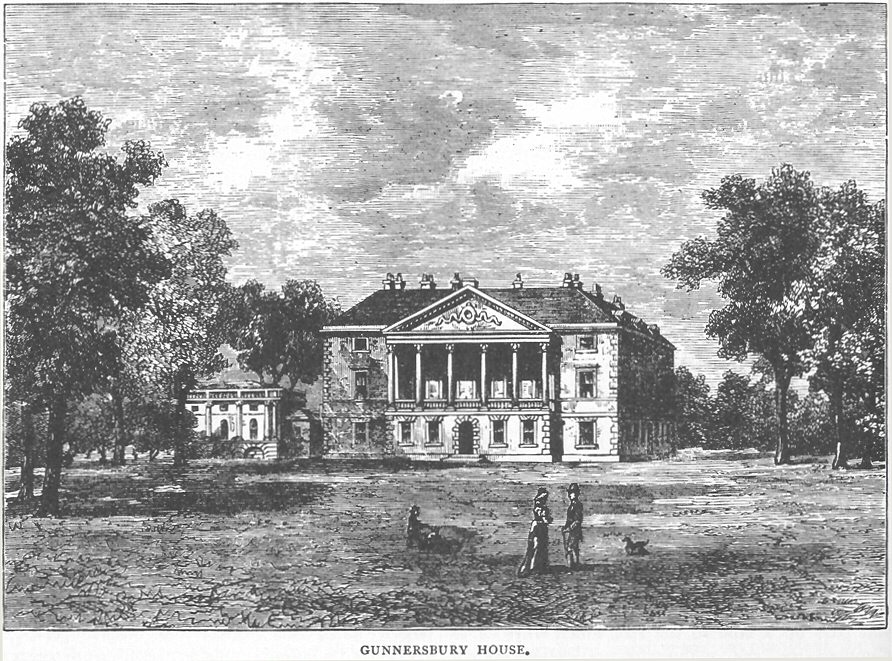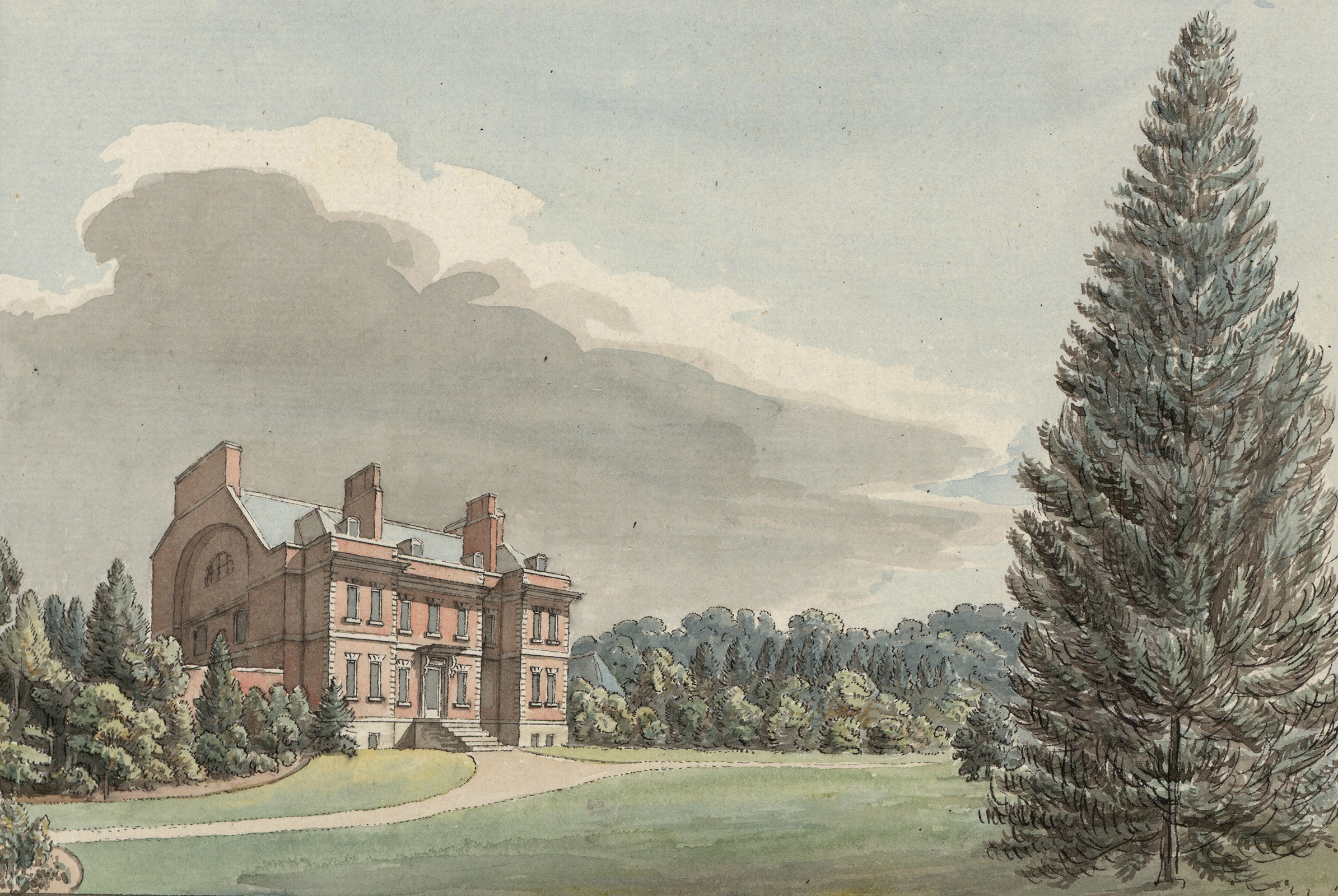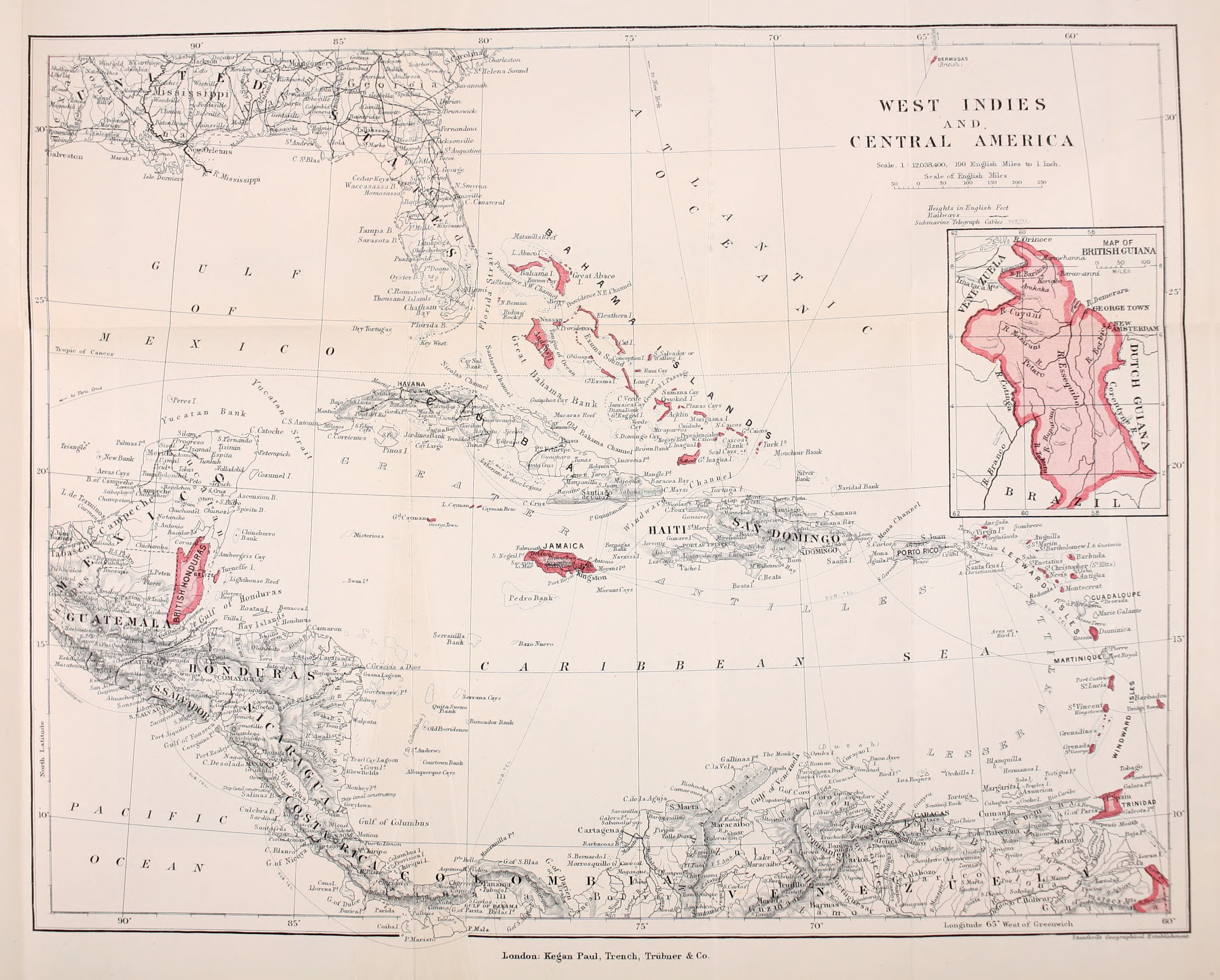|
Dodington Park
Dodington Park is a country house and estate in Dodington, South Gloucestershire, England. The house was built by James Wyatt for Christopher Bethell Codrington (of the Codrington baronets). The family had made their fortune from sugar plantations in the Caribbean and were significant owners of slaves. It remained in the Codrington family until 1980; it is now owned by the British businessman James Dyson. The estate comprises some of landscaped park with woods, lakes, lodges, a dower house, an orangery, a church, and a walled kitchen garden. Formal gardens adjoin the main house. The house is Grade I listed on the National Heritage List for England and the landscaped park is Grade II* listed on the Register of Historic Parks and Gardens. The dower house, orangery, and St Mary's Church which all adjoin the house are also each individually Grade I listed, as is the Bath lodge at the southern part of the estate. The wall, railings and gate piers near the Bath lodge are listed G ... [...More Info...] [...Related Items...] OR: [Wikipedia] [Google] [Baidu] |
Dodington, Gloucestershire
Dodington is a village and civil parish in South Gloucestershire, England. The village lies in a small, fertile valley between Codrington and Old Sodbury, and runs together with the even tinier hamlet of Coombes End. It is about 2.5 miles southeast of Chipping Sodbury and four miles from Yate railway station. The River Frome rises within Dodington Park, the estate that originally formed the economic basis of this small village. The Cotswold Way also passes through the north end of the village. The River Boyd rises just south of the village. In addition to the rural area around the village, the parish nowadays encompasses substantial housing areas to the south of Yate and Chipping Sodbury, the latter being the location of Dodington Parish Hall. Governance An electoral ward in the same name exists, but only covers housing estates in south Yate. Other northern parts of the parish are in the electoral ward of Chipping Sodbury, while Dodington village and the surrounding ... [...More Info...] [...Related Items...] OR: [Wikipedia] [Google] [Baidu] |
A46 Road
The A46 is a major A road in England. It starts east of Bath, Somerset and ends in Cleethorpes, Lincolnshire, but it does not form a continuous route. Large portions of the old road have been lost, bypassed, or replaced by motorway development. Between Leicester and Lincoln the road follows the course of the Roman Fosse Way, but between Bath and Leicester, two cities also linked by the Fosse Way, it follows a more westerly course. History The original (1923) route of the A46 was from Bath to Laceby, passing through Cheltenham, Broadway, Stratford-on-Avon, Coventry, Leicester, Newark and Lincoln. Unusually for such a long road, no changes were made to its route until the 1970s. In recent years the central sections of the road have been rerouted and renumbered substantially, and there are now two sections where there are gaps of over where the road does not exist at all. The A46 has also been extended from Laceby to Grimsby and Cleethorpes – the road between Laceby ... [...More Info...] [...Related Items...] OR: [Wikipedia] [Google] [Baidu] |
Pevsner Architectural Guides
The ''Pevsner Architectural Guides'' are four series of guide books to the architecture of the British Isles. ''The Buildings of England'' series was begun in 1945 by the art historian Sir Nikolaus Pevsner, with its forty-six original volumes published between 1951 and 1974. The fifteen volumes in ''The Buildings of Scotland'' series were completed between 1978 and 2016, and the ten in ''The Buildings of Wales'' series between 1979 and 2009. The volumes in all three series have been periodically revised by various authors; ''Scotland'' and ''Wales'' have been partially revised, and ''England'' has been fully revised and reorganised into fifty-six volumes. ''The Buildings of Ireland'' series was begun in 1979 and remains incomplete, with six of a planned eleven volumes published. A standalone volume covering the Isle of Man was published in 2023. The series were published by Penguin Books until 2002, when they were sold to Yale University Press. Origin and research methods After ... [...More Info...] [...Related Items...] OR: [Wikipedia] [Google] [Baidu] |
Francis Bernasconi
Francis Bernasconi (1762 – 1 January 1841), aka Francisco Bernasconi, was an English ornamental carver and plasterer of Italian descent. He became one of the most successful ornamental carvers and plasterers in Georgian Britain. Early life Francis Bernasconi was the son of Bartholomew (Bartolomeo) Bernasconi (died 1786), who hailed from a family of architects and stuccoists from the environs of Lugano, Switzerland. He is likely to have been related to the ornamental plasterer Bernardo or Bernato Bernasconi, "a poor man with a large fameley in the town of Buckingham". His more distant cousins of the same Lugano dynasty included various architects, sculptors and stuccatore active in Italy, Germany, Spain and Russia. Works *Gothic stucco work for Cobham Hall, Kent (1800–1809) *Stucco work in the Great Tower of Westminster Abbey (1803) *Mouldings, angels and heraldic shields in Windsor Castle (1805) *Interior plasterwork in Laurieston House, 51-2 Carlton Place, Glasgow (18 ... [...More Info...] [...Related Items...] OR: [Wikipedia] [Google] [Baidu] |
John Webb (architect)
John Webb (1611 – 24 October 1672) was an England, English architect and scholar, who collaborated on some works with Inigo Jones. Life He was born in Little Britain, London, Little Britain, Smithfield, London, and died in Butleigh in Somerset. He had a close association with fellow architect and theatre designer Inigo Jones, for whom he worked as an assistant from 1628.Giles Worsley, ''Inigo Jones and the European Classical Tradition'' (Yale, 2007), p. 177. In the 1640s and 1650s, Jones and Webb jointly designed Wilton House (near Salisbury, England, Salisbury, Wiltshire) with its distinctive Single and Double Cube rooms. Webb's earliest known drawings were made for the Worshipful_Company_of_Barbers#Barber-Surgeons'_Hall_and_Arms, Barber Surgeons' Hall in London in 1636–7, and in 1638 he designed a lodge for John Penruddock at Hale, Hampshire, Hale in Hampshire and stables for a Mr Featherstone, but it is unclear if these were built. At the beginning of the English Ci ... [...More Info...] [...Related Items...] OR: [Wikipedia] [Google] [Baidu] |
William Emes
William Emes (1729 or 1730–13 March 1803) was an English landscape gardener. Biography Details of his early life are not known but in 1756 he was appointed head gardener to Sir Nathaniel Curzon at Kedleston Hall, Derbyshire. He left this post in 1760 when Robert Adam was given responsibility for the entire management of the grounds. During his time at Kedleston he had started to alter the earlier formal nature of the park and had constructed the upper lake. Also during this time he married Mary Innocent, who was his servant and the daughter of a tailor. Together they had five sons and three daughters.Goodway, K "Emes, William (1729/30–1803)", rev., ''Oxford Dictionary of National Biography'', Oxford University Press, 2004accessed 30 January 2007/ref> His son John Emes who was born in 1762 was a successful engraver and silversmith. After leaving Kedleston he moved to live in Bowbridge House, (Not Bowbridge Fields farm as previously thought) Mackworth, Amber Valley, Mackwor ... [...More Info...] [...Related Items...] OR: [Wikipedia] [Google] [Baidu] |
Capability Brown
Lancelot "Capability" Brown (born c. 1715–16, baptised 30 August 1716 – 6 February 1783) was an English gardener and landscape architect, a notable figure in the history of the English landscape garden style. Unlike other architects including William Kent, he was a hands-on gardener and provided his clients with a full turnkey service, designing the gardens and park, and then managing their landscaping and planting. He is most famous for the landscaped parks of English country houses, many of which have survived reasonably intact. However, he also included in his plans "pleasure gardens" with flower gardens and the new shrubberies, usually placed where they would not obstruct the views across the park of and from the main facades of the house. Few of his plantings of "pleasure gardens" have survived later changes. He also submitted plans for much smaller urban projects, for example the college gardens along The Backs at Cambridge. Criticism of his style, both in ... [...More Info...] [...Related Items...] OR: [Wikipedia] [Google] [Baidu] |
History Of The British West Indies
The term British West Indies refers to the former English and British colonies and the present-day overseas territories of the United Kingdom in the Caribbean. There have been several attempts at political unions in the history of the British West Indies. These attempts have occurred for more than 300 years, from 1627 to 1958, and were carried out, or sometimes imposed, first by the English and then the British government. During this time, some of the attempted unions were true federations of colonies and others involved attaching various colonies to a major nearby colony for the purposes of cheaper, efficient government or because the attached colonies were too small to justify a governor and administration of their own. The initial federal attempts never went so far as to try to encompass all of the British West Indies (BWI), but were more regional in scope. The historical regional groupings were the British Leeward Islands, the British Windward Islands, and Jamaica with ... [...More Info...] [...Related Items...] OR: [Wikipedia] [Google] [Baidu] |
Sugar Plantations In The Caribbean
Sugar plantations in the Caribbean were a major part of the economy of the islands in the 18th, 19th, and 20th centuries. Most Caribbean, Caribbean islands were covered with Sugarcane, sugar cane fields and mills for refining the crop. The main source of labor, until Abolitionism, the abolition of chattel slavery, was Atlantic slave trade, enslaved Africans. After the abolition of slavery, Indentured servitude, indentured laborers from India, China, Portugal and other places were brought to the Caribbean to work in the sugar industry. These plantations produced 80 to 90 percent of the sugar consumed in Western Europe, later supplanted by European-grown sugar beet. The sugar trade Sugar cane development in the Americas The Portuguese introduced sugar plantations in the 1550s off the coast of their Brazilian settlement colony, located on the island of Sao Vincente. As the Portuguese and Spanish maintained a strong colonial presence in the Caribbean, the Iberian Peninsula amasse ... [...More Info...] [...Related Items...] OR: [Wikipedia] [Google] [Baidu] |
Elizabethan Architecture
Elizabethan architecture refers to buildings in a local style of Renaissance architecture built during the reign of Queen Elizabeth I of England from 1558 to 1603. The style is very largely confined to secular buildings, especially the large prodigy houses built for the newly-risen nobility close to the court. Many ordinary buildings continued vernacular styles with little decoration. New religious building had ended abruptly at the Dissolution of the Monasteries from . English architecture was late in adopting Renaissance standards compared to the rest of Europe, and in the Elizabethan style northern Europe rather than Italy was the main influence. After Elizabeth a new court culture of pan-European artistic ambition under James I (1603–1625) saw the style morph into Jacobean architecture. Stylistically, Elizabethan architecture is notably pluralistic. It came at the end of insular late Gothic traditions in design and construction called the Perpendicular style in c ... [...More Info...] [...Related Items...] OR: [Wikipedia] [Google] [Baidu] |
Dodington Park, South Gloucestershire, Bath Lodge - Geograph
{{disambiguation ''Dodington'' may refer to: * Dodington, Gloucestershire, a village and civil parish in Gloucestershire, England * Dodington, Somerset, a village in Somerset, England * Dodington, a village in the parish of Whitchurch, Shropshire Whitchurch is a market town in the north of Shropshire, England. It lies east of the Wales, Welsh border, 2 miles south of the Cheshire border, north of the county town of Shrewsbury, south of Chester, and east of Wrexham. At the 2021 Unit ..., England See also * Doddington (other) ... [...More Info...] [...Related Items...] OR: [Wikipedia] [Google] [Baidu] |
Chippenham
Chippenham is a market town in north-west Wiltshire, England. It lies north-east of Bath, Somerset, Bath, west of London and is near the Cotswolds Area of Outstanding Natural Beauty. The town was established on a crossing of the River Avon, Bristol, River Avon, where some form of settlement is believed to have existed since before Roman Britain, Roman times. It was a royal vill and probably a royal hunting lodge, under Alfred the Great. The town continued to grow when the Great Western Railway arrived in 1841. It had a population of 36,548 in 2021. History Etymology The ''Anglo-Saxon Chronicle'' records the town as ''Cippanhamme'': this could refer to a person called Cippa who had his hamm, an enclosure in a river meadow. An alternative theory suggests that the name is derived from the Anglo-Saxon word ''ceap'', meaning 'market'. The name is recorded variously as Cippanhamm (878), Cepen (1042), Cheppeham (1155), Chippenham (1227), Shippenham (1319) and Chippyngham (1541). In ... [...More Info...] [...Related Items...] OR: [Wikipedia] [Google] [Baidu] |






